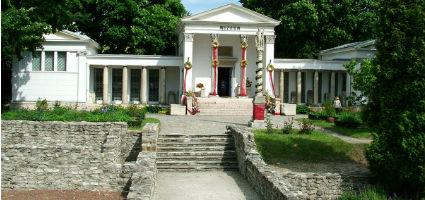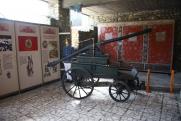 |
Address: 1031, Budapest Szentendrei út 135-139.
Phone number: (1) 250-1650, (1) 430-1081
E-mail: aquincum@aquincum.hu
Opening hours: 01.04-31.10.: Tue-Sun 10-18
Park: 9-18 01.11-31.03.: Tue-Sun 10-16< |
|
Ticket for adults
(summer term)
|
1600 HUF
|
/ capita
|
|
Ticket for adults
(in winter)
|
1000 HUF
|
/ capita
|
|
Individual ticket for adults
|
1000 HUF
|
/ /capita
|
|
Group ticket for adults
(in winter)
|
1000 HUF
|
/ capita
|
|
Ticket for students
(summer term)
|
800 HUF
|
/ capita
|
|
Ticket for students
(in winter)
|
500 HUF
|
/ capita
|
|
Individual ticket for students
|
500 HUF
|
|
|
Ticket for pensioners
(summer term)
|
800 HUF
|
/ capita
|
|
Ticket for pensioners
(in winter)
|
500 HUF
|
/ capita
|
|
Individual ticket for pensioners
|
500 HUF
|
|
|
Ticket for families
(summer term)
|
2100 HUF
|
/ family
|
|
Ticket for families
(in winter)
|
1700 HUF
|
/ family
|
|
Program ticket
|
900 HUF
|
|
|
Program ticket
|
800 HUF
|
|
|
Season ticket for a year
|
8000 HUF
|
|
|
Season ticket for a year
|
30000 HUF
|
|
|
Season ticket for a year
|
20000 HUF
|
|
|
Season ticket for a year
|
160000 HUF
|
|
|
Season ticket for a year
|
160000 HUF
|
|
|
Individual season ticket for a year
|
5000 HUF
|
|
|
Group guide
(min. 20 capita)
|
1000 HUF
|
/ / capita
|
|
Group guide
(over 25 people)
|
8000 HUF
|
/ group
|
|
Group guide for adults
|
4000 HUF
|
/ group
|
|
Group guide for students
(in summer)
|
600 HUF
|
/ / capita
|
|
Group guide for students
(min. 10 capita)
|
450 HUF
|
/ / capita
|
|
Group guide for adults
|
6000 HUF
|
|
|
Photography
|
600 HUF
|
/ piece
|
|
Video
|
600 HUF
|
/ piece
|
„Please Lord, for the merits and plea of St. Florian's, please protects us from all spiritual and physical peril, especially against the digestive flames,, ravages of fire and evil spirits. Through Christ our Lord! Amen!"
Florianus, St. Florian was a real historical person. He was born around 240 and died a martyr's death on 4 May 304. He served as a captain in the Roman legion where he took up in the Christian faith.
During the reign of Emperor Diocletian, in 303 persecution of Christians began again. When Florian became aware that in Laureacum on the banks of Enns (today Lorch) 40 Christians were captured. They were Florian's former soldiers so he came to their aid. Before arriving in the city, he openly confessed that he was a Christian, therefore he was captured and put on trial. His former soldier mates brought him before the judge. As punishment, he was caned, then he was thrown into the River Enns with stones in his neck. It happened on 4 May 304. He was thrown into the water on May 4 from a bridge over the river. The soldier who pushed him into the water went blind.
His body was buried by a widow named Valeria. Over his tomb, which was taken care for by the Benedictines, and the Lateran a church was built. His grave is now a famous shrine. He is most respected in Bavaria, Austria, Poland. St. Florian is a saint who protects against floods and fires.
His respect in Hungary first spread at the end of the Middle Ages in the German-inhabited regions of Spis, then it spread all over Hungary in the 17th century. Initially, people asked help from St. Florian against flooding. His name was first associated with fire at the end of the 15th century because it was believed that in his youth due his prayer flames of a burning house. went out. As a soldier, his heroic resistance hindered the burning down of his fortress.
